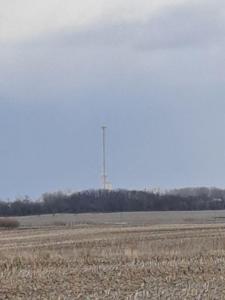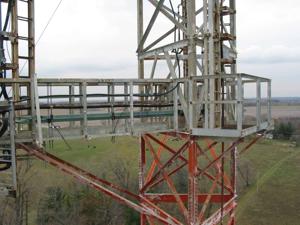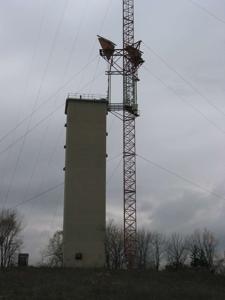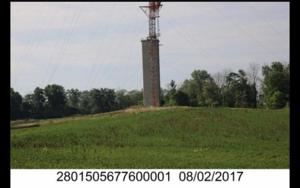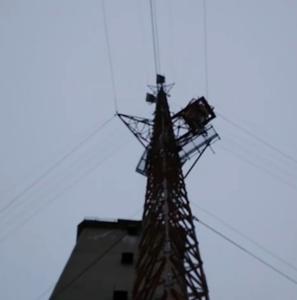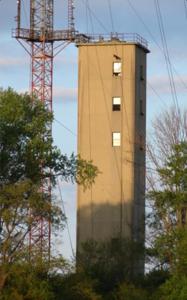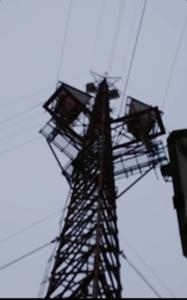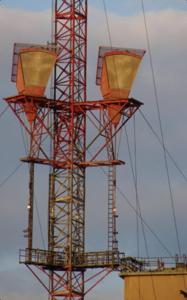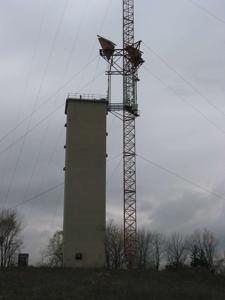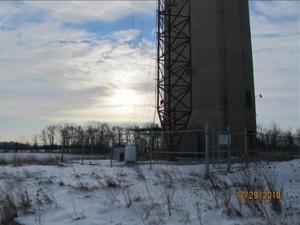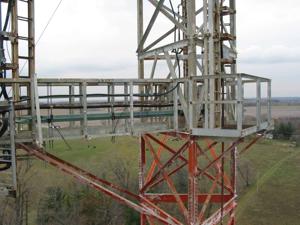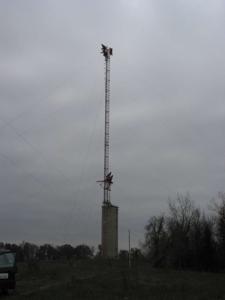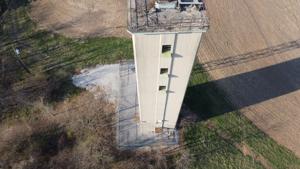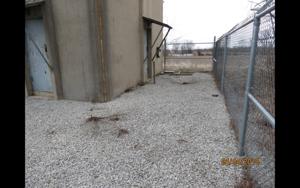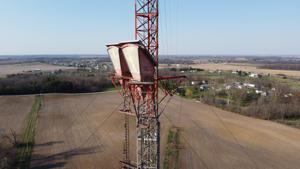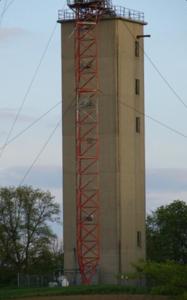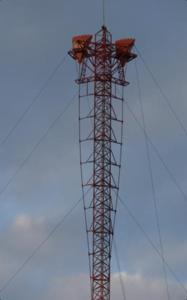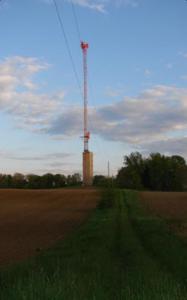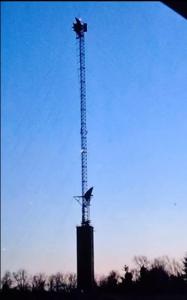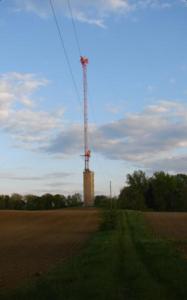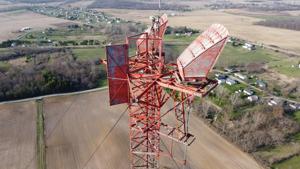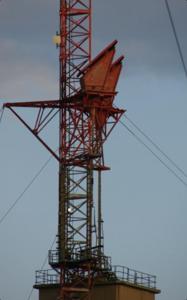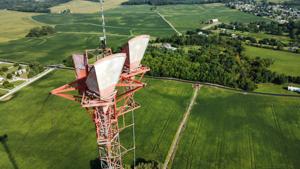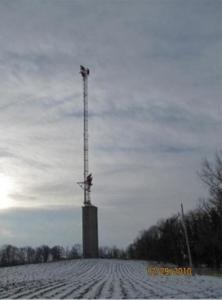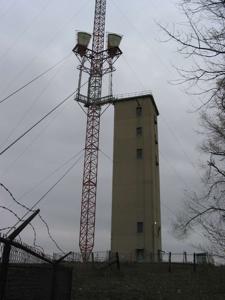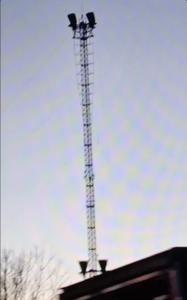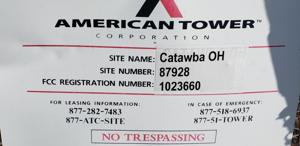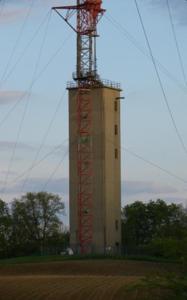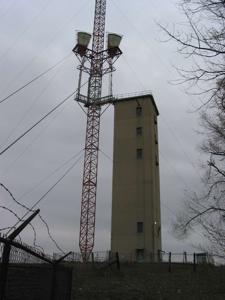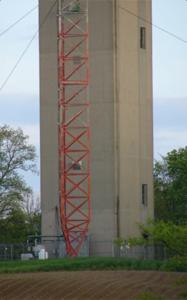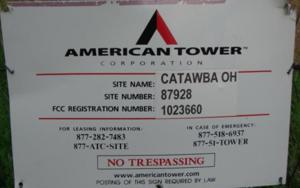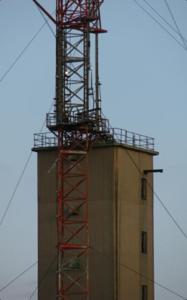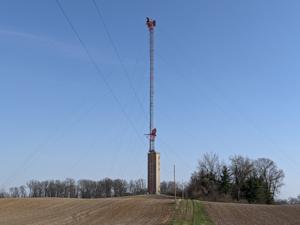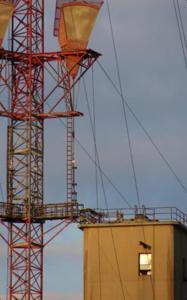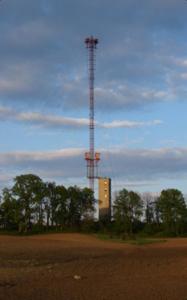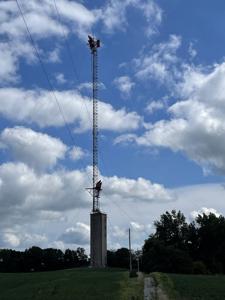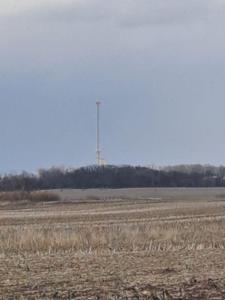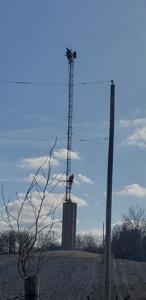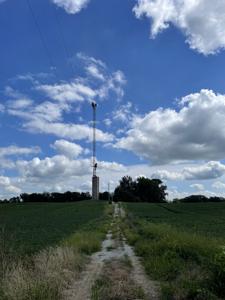CATAWBA OH - Ohio
Address: 10955 Knowville Rd. Mechanicsburg 43044
Paths To: Columbus Springfield
View On: Long Lines Map | Google Maps | Bing Maps
View Random Site
Site Notes
Add site noteCatawba Ohio long lines station Collapse/Expand
the Catawba Ohio AT&T long lines site was constructed in 1949 as just the 103 foot tall concrete tower because steel was in short supply for the war effort. the concrete tower had delay lens antennas, two would face to the demolished Springfield tower and the other two faced to a rooftop installation in Columbus. The Catawba station was built to serve a long distance/microwave route from Dayton to Columbus. In July of 1953 the concrete tower got its delay lens antennas replaced with round parabolic dish antennas. In the 60s steel became replenished as the wars slowed down and in 1959-60 a 456 foot tall steel tower was added onto the site to improve communication between the site and Columbus. When the taller tower was added on the antennas were removed from the concrete tower because the taller tower had 2 pairs of Western Electric KS15676 horn antennas, the top pair faced to Columbus and the lower pair faced to the demolished Springfield concrete tower. Now when the taller tower was added on, the site in Columbus changed locations and a different tower was installed on a building a few blocks away. If you visit the Catawba long lines site and you look at the top of the steel tower on the east side, you will se a red steel rectangle between the top two horns. that red rectangle is put up there for mechanical load balancing to detect signals from other distant stations (possibly Mutual). The site in Mutual was a concrete tower that had Gabriel horns at the top (demolished in 1989).
Info collected from these sources:
Long.Lines.Net
nf8m's website of Southern Ohio Concrete Towers
Further Catawba site information. Collapse/Expand
The concrete tower at Catawba was built in late 1949 as a microwave relay station (an "auxiliary station" in AT&T terminology) between Springfield to the west and the LaVeque Tower, a tall office building in downtown Columbus, about 32 miles to the east. The station was part of a route which carried network television programming from Dayton to Columbus.
Two pairs of delay-lens antennas were mounted on the Catawba tower's roof. Initially, three radio channels using TE-2 microwave radio equipment were installed to carry television programming from Dayton to Columbus, the equipment was placed into service in October 1949, with one of the three channels arranged for reversible operation. By May 14, 1951 additional radio channels were installed to carry television signals from Columbus to Dayton and on to the nationwide TV network.
The TE-2 equipment was replaced with TD-2 type equipment by July 1953.
The great height of the LeVeque tower allowed the next hop west to be placed farther away than usual which is how it ended up in Catawba. As the Long Lines network grew, AT&T constructed additional microwave routes to serve Columbus. The new routes did not terminate at the Laveque Tower, but rather at an Ohio Bell Telephone central office a few blocks away. During this network expansion, the Catawba route was changed so that it, too, terminated at the Ohio Bell building. Presumably, this was done in order to consolidate all of the city's microwave routes at a single destination. However, the lower height of the Ohio Bell building did not provide sufficient path clearance to Catawba.
Catawba's steel tower, horn-reflector antennas and waveguide bridge were constructed when the station's destination was changed. The antennas at the Ohio Bell central office were attached to a short tower on building's roof, at a height of about 270 ft. (82 M) above ground level - considerably lower than the LaVeque Tower's antenna location. It's likely that Catawba's concrete tower was not tall enough to avoid interference from the terrain along the microwave path between the antennas, and that the new tower was erected to provide additional terrain clearance. The new, taller guyed tower at Catawba provided an unobstructed path between the stations.
The use of horn-reflector antennas on the new tower, in place of the delay-lens antennas on the concrete tower, was in keeping with the Bell System's plans for improving its microwave network. The horn-reflector, developed several years after the delay lens, allowed a given route to carry more traffic by supporting dual polarizations (doubling the number of radio channels available) and simultaneous transmission in the 4, 6 and 11 GHz frequency bands. The delay-lens antenna operated with only one polarization, and only in the 4 GHz band.
-TM 22
Site Documents
Site Pictures
Add site PicturesThis event has 0 comments.
Please log in to leave a comment.
Upload Site Images
For any questions or comments please email [email protected].
